
Editorial
Mixed-Wheel Puzzling – It's About More Than Clearance
Mix-wheeled mountain bikes aren’t new. Specialized's Big Hit model had a smaller rear wheel than front way back in 2001 and so did the 2003 Transition Dirt Bag. Others, including the Brodie 8-Ball, also adopted the 26-inch front, 24-inch rear wheel setup and many of these bikes were around for several years. But with racers at the time shunning the idea, mixed-wheels were largely left to ‘freeriders’ and they didn’t embrace the idea much either.
Then bike engineers started messing around with the size of our wheels with large 29-inch hoops showing up and shortly after the 650B/27.5-inch wheel was pushed hard, essentially wiping out 26-inch wheeled performance mountain bikes.* As bike shapes and technology progressed, the push to 29-inch wheels has become more palatable but there remain a few undeniable traits to the larger hoops that some riders prefer to avoid.
Without diving too deep into the differences between 29 and the slightly smaller 27.5inch wheels, some key differences to the larger hoops are, they’re heavier for the same wheel, have a wider turning radius, and take more effort to accelerate. In simple terms, they can feel less dynamic on the trail, because of their size and all the traits that come with that.
But there are benefits to the larger wheel including an improved approach angle to an obstacle, effectively ‘smoothing’ the same elements of the trail that a 27.5-inch wheel will generally find rougher. There’s also a larger contact patch which translates to more grip and people also claim it provides taller riders with a more suitable fit.
*Slopestyle, dirt jump and some freeride bikes still use 26-inch wheels but generally, it’s been left to cheaper department store bikes.
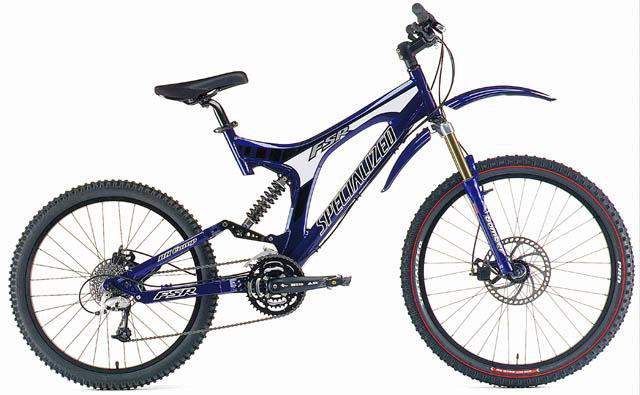
Some people say mountain bikers have always been closet motorcross riders, but I don't see it… Photo: Specialized
Problems With The 29er Fit Statement
As someone who is considered reasonably tall, I can’t deny the better proportional fit of 29-inch wheels in a bike suited to my size. At 191cm, I’m not the tallest but it wasn’t until jumping aboard extra large bikes with 29-inch wheels that the proportions appeared better. Before that, many of my extra-large bikes looked strange with the smaller wheels. I also don’t disagree that bigger riders can generally work the bike similarly to someone considerably shorter on a smaller bike with 27.5-inch wheels, but it’s often not so simple.
I’m not fond of people trying to pigeonhole riders to a wheel size based on their height. We’ve all heard comments along the lines of 'Jenny’s short, she should be on a small wheel’ or ‘at Johny's height, the 29er works best.’ There is merit to the idea that a rider can experience benefits with a particular wheel size, but Jenny might want the calmer ride quality of a 29-inch wheel and be riding trails that don’t make clearance a problem and Johny may want to ride down the trail like a Jack Russell terrier high on caffeine.
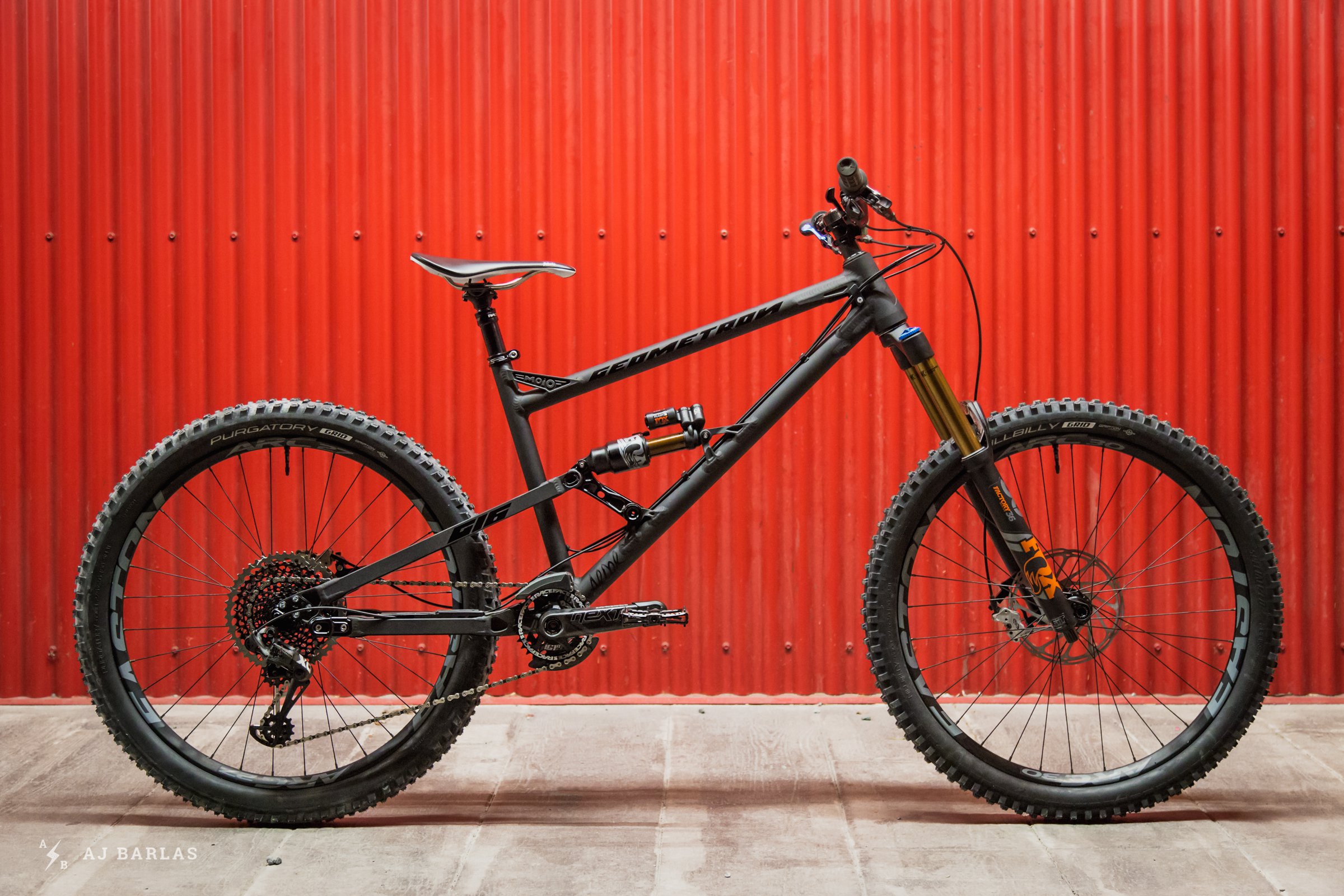
The shape of the G16 opened my eyes to what was possible, often providing more comfort and grip with the smaller wheels than the large 29ers of the time.
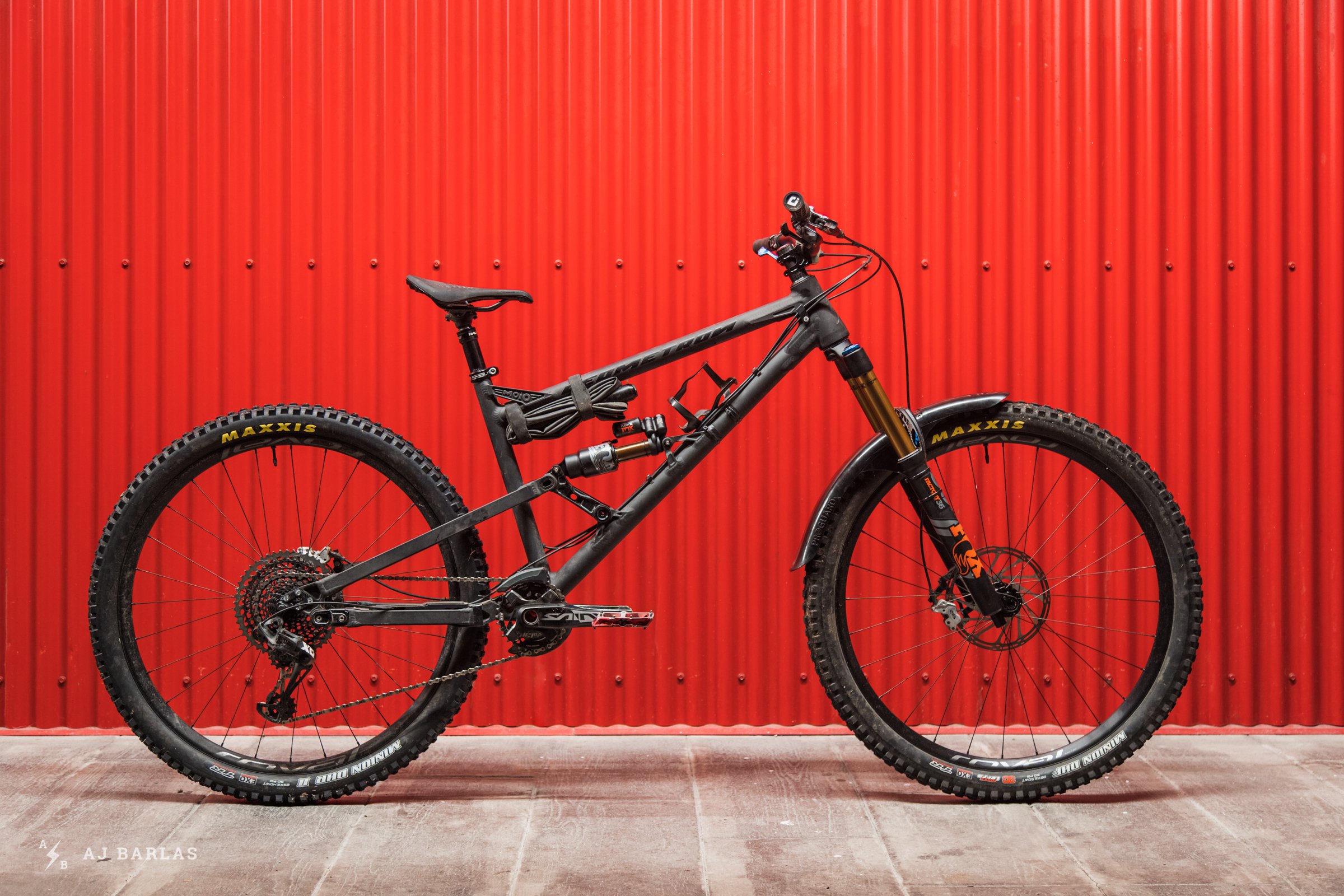
Flipping it over to the full 29 transferred most of those traits only with the bigger wheels. It lost some of the dynamic ride qualities I enjoy from the small wheels but was quicker and smoother.
When my G16 was built with 27.5-inch wheels, the bike performed sensationally. Until that time, I hadn't experienced such grip and composure from a bike with smaller wheels. The shape of the G16 helped it perform better than the available size extra large bikes with 29-inch wheels at the time. For that reason, Chris Porter was reluctant to even try larger wheels, claiming the grip and stability afforded by the shape of the bike made up for it.
But as I discovered, once the bigger wheels were slapped into my G16 the bike exhibited a calmer demeanour on the trails, allowing for increased speeds with a more relaxed approach. I needed to adjust my brake points for the effect of the larger wheels and recalibrate for the change in trail feedback, too.
Overall, I found the benefits provided by the shape of the bike with the smaller wheels, translated to the bigger wheels. But it was less dynamic on the trail and that’s a ride quality I enjoy when goofing around, which is most of my time on a bike these days.
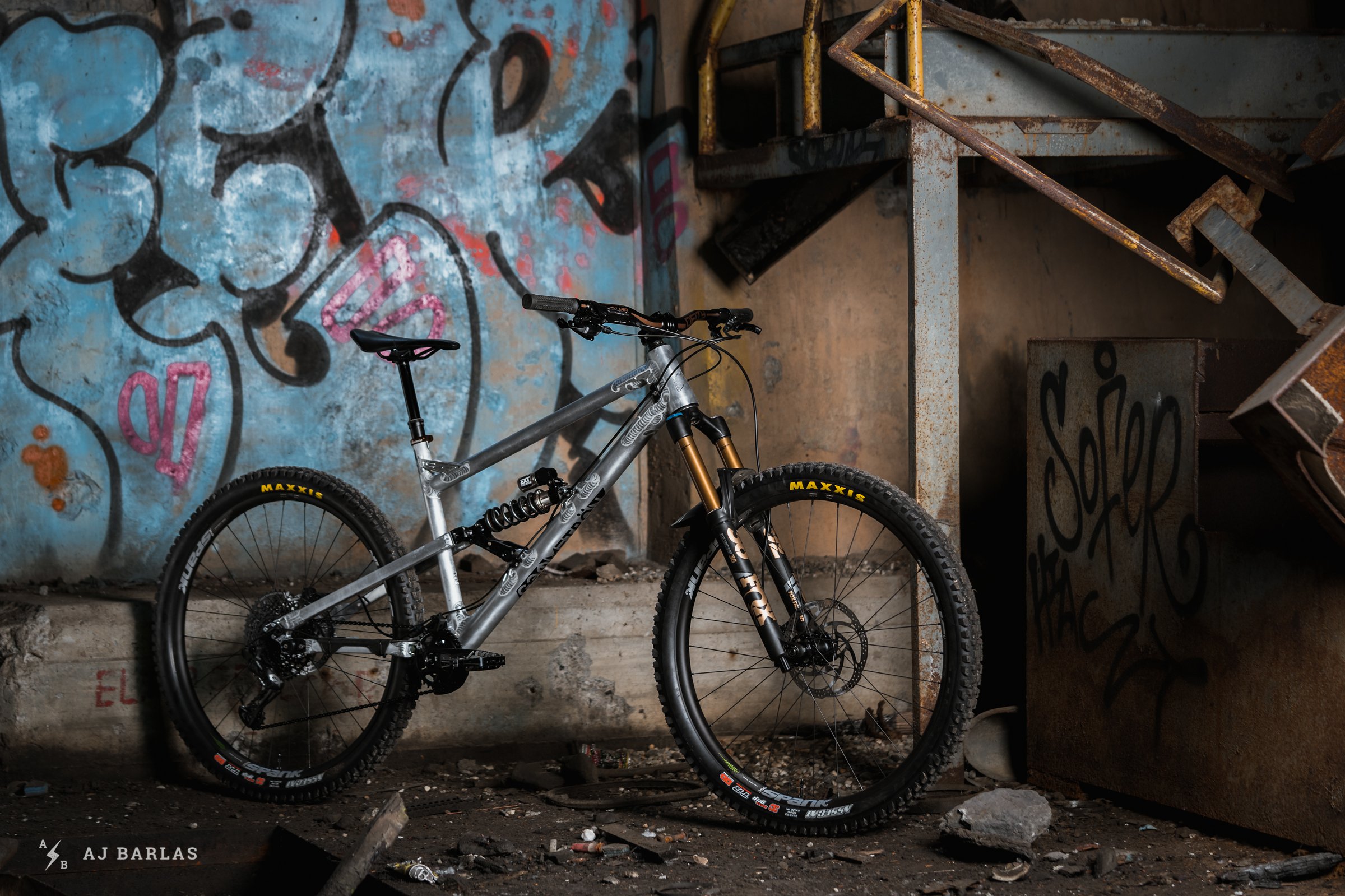
The G1 is bigger than my G16, fitting me better and almost pushing to too big. But the geometry changes possible to the bike make it very versatile and I've been able to find a happy place with both the full 29er setup and the apropos mixed-wheel.
The G1 Opened More Possibilities
When Nicolai/GeoMetron announced their updated version of the G16, the G1, they claimed it to be one bike with many possibilities. I was happy with the G16 but in extra physical sections of trail, or on longer runs that required constant working of the bike to remain upright, I still found the cockpit a touch small; the wheelbase was fine, though. But the thing I wanted most was to lower the BB. The G1 achieved this while offering heaps of opportunities to adjust the geometry to best suit a rider’s preferences. Having the ability to test so many shapes and configurations was the nail in the coffin and I decided, after less than two years on ‘the last bike I plan to buy’ I was already moving on.
The G1 allows owners to adjust geometry via a chip system that Nicolai refers to as, Mutators. These mutators are located at the end of the seat stay and chainstay. The benefit of the system is the bike can switch from full 2-9 to mixed-wheel, to full 27.5* and maintain its geometry across each change.
*The 27.5-inch wheel setup requires an additional external lower headset cup to bring everything back to the correct height
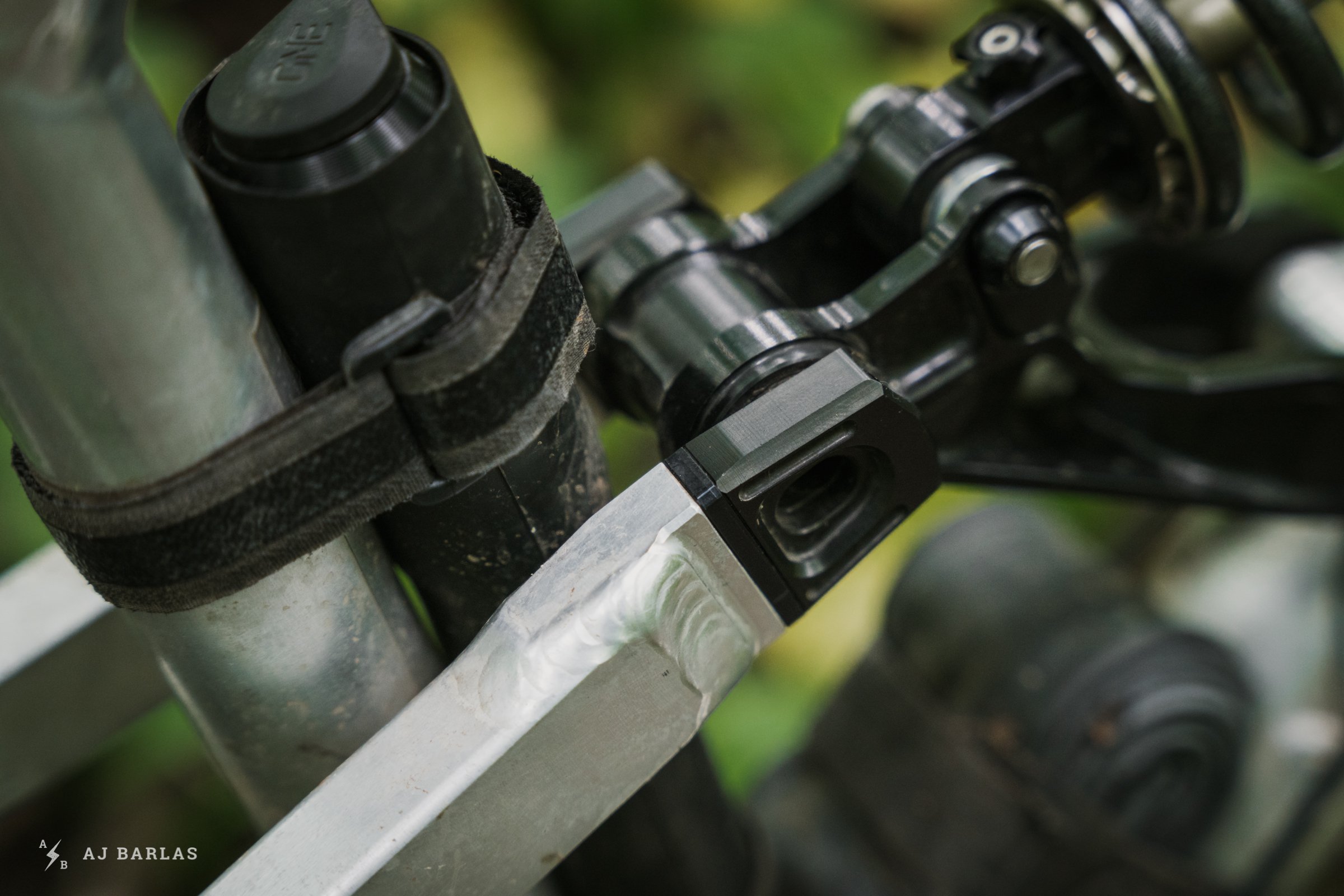
With the full 29er setup I ended up happiest with the 3.5mm seat stay mutators and haven't noticed a discernible difference in suspension characteristics.
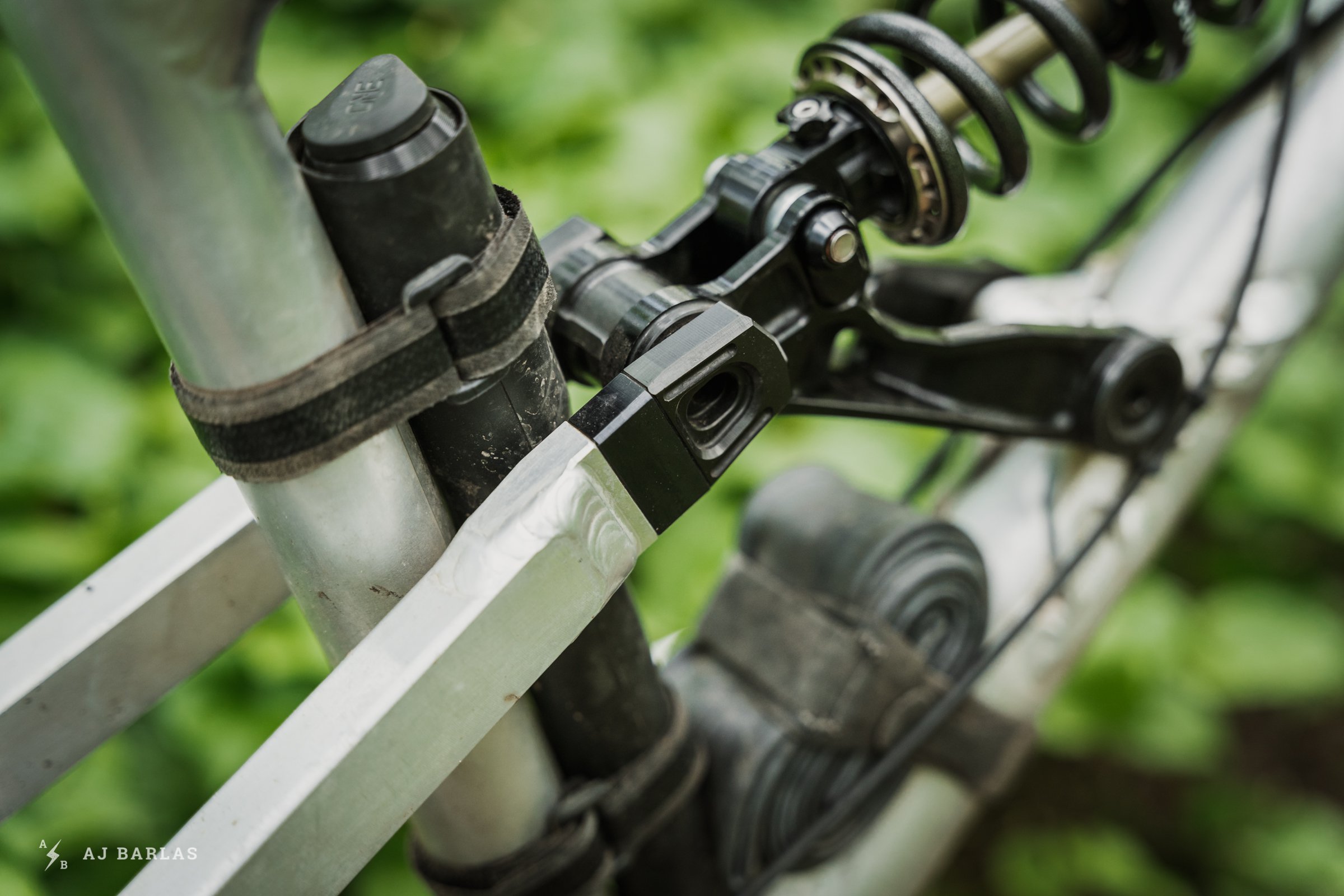
With the mixed-wheel setup I ended up on the 15mm seat stay mutator. I found the change to the suspension subtle though not as consistent through the stroke as the 3.5mm setup.
Subtle effects on the suspension can be felt when changes are made, particularly at the seat stay but they're minimal and for some riders, these may be beneficial. The most notable I found was with the longest mutator settings in the seat stay, which made the suspension more progressive. The downside for me was less control when hammering deep into the travel in rough terrain and it was a bit too light off the top. But overall, the differences between changes are subtle enough that the ride quality remains good.
Moving to the G1 has helped me better understand the effects of geometry, how different bike shapes can react, and what changes to the frame versus suspension can do for ride shape. Something as simple as changing the spring rate in the rear has a large impact on dynamic bike shape but until I was able to bust open a world of possibilities on the same bike, it wasn’t as clear to me. Armed with a bike that can be set up in many different ways, I’ve spent the last 12 months testing the mix-wheel setup vs full 29, maintaining the geometric settings as I went.
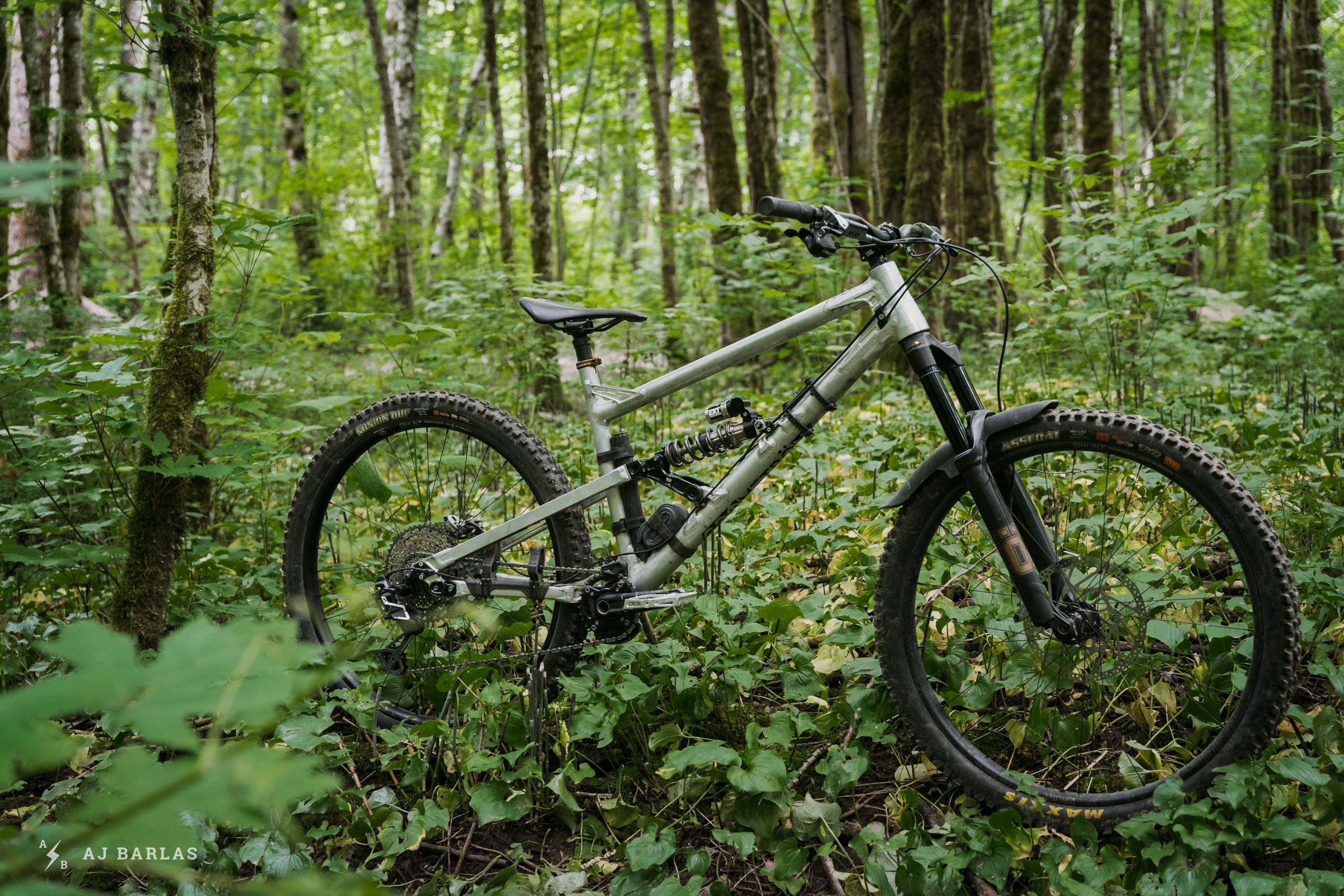
My full 29 setup is a touch different to the stock configuration, with a shorter rear centre and the 3.5mm seat stay mutator standing the bike a bit taller while shortening the wheelbase.
A Couple of House-Keeping Bits
To begin with, I should share where I landed for the 29er settings on the G1. With the bigger wheels, I eventually settled on the shortest of the three chainstay mutators, with the 3.5mm seat stay mutators. This change brings the rear-centre down from 453mm to 445mm and pitches the seat tube and head tube angles forward less than half a degree; STA of 79.4º, HTA of 62.9º. The bike can also change travel with a switch to the position of the rear shock eyelet in the rocker link. Throughout this experiment, I’ve remained in the 162mm travel option.
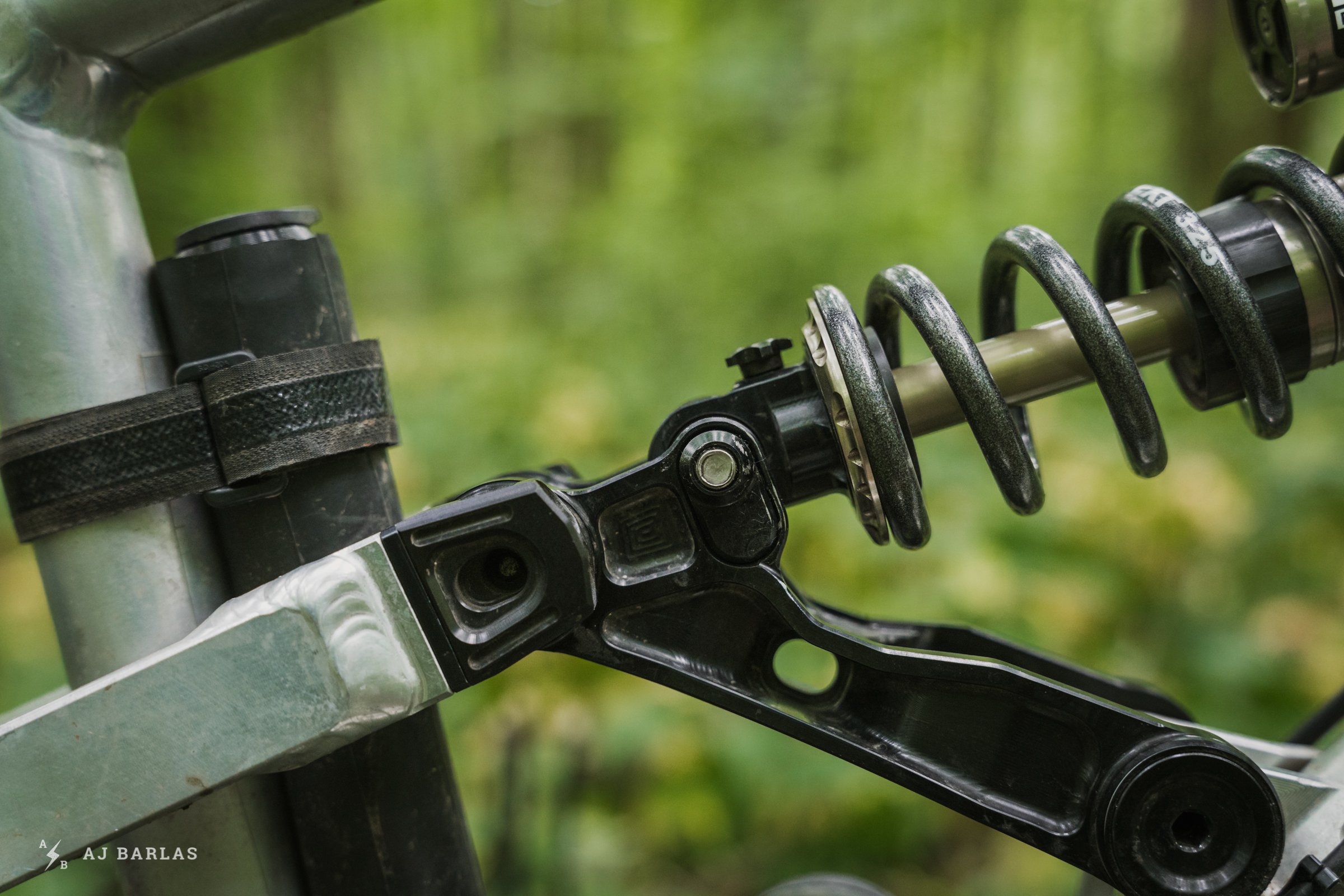
Flipping the mounting chips for the rear shock eyelet changes the travel from 162mm (shown) to 175mm. The longer travel is lighter through the stroke but slightly more progressive. I've had not problems with the 162mm but now that I'm done experimenting with shape and wheel size, I'm going to try the longer travel setting. Does the puzzling ever end?
The above has been my preferred setting for the G1 with 29-inch wheels. I didn’t want to lengthen the front centre of the bike by removing the 3.5mm seat stay mutator (slackening out the bike) and running it taller wasn’t of interest after trying it with the stock 6.5mm seat stay mutator and shorter rear centre. The reach is more complex to calculate but with my setup including 17.5mm of spacers beneath a 35mm stem, the actual static reach was ~558mm.
It’s also worth mentioning that I ride with flat pedals almost exclusively these days. Because of this, I often find myself looking to sit a bit deeper into the bike than when I rode clips. With clips, I found myself able to relax in a slightly taller position up over the bike because my feet were connected. Flat pedals result in me pushing the bike differently through the terrain and having to be deeper to remain well connected.
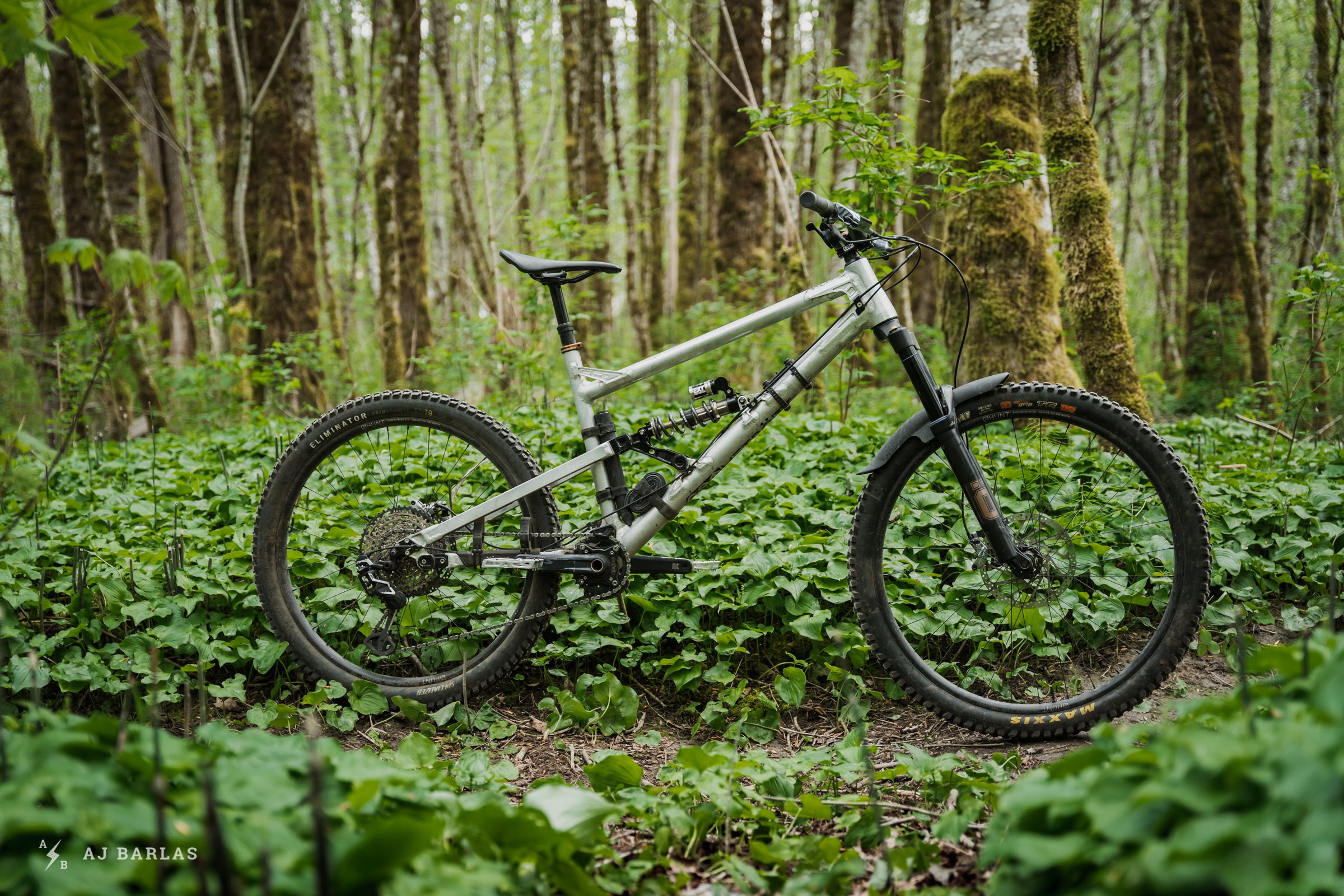
Looks may be subjective but I agree with anyone who finds the look of a mixed-wheel bike and particularly my G1, not so easy on the eyes. Good thing it's a hoot to ride!
Mixed-Wheel vs Full 29er
There are positives and negatives to every bike setup and despite being able to maintain close to identical bike shape when making changes during this experiment, there were elements I didn’t like from each. Yes, as a taller rider I generally have no issues with clearance, though I’ve still had some good rubber burn on the back of my legs from excessive body English. How the bike behaves between each wheel setup is significant, though. I found the 29-inch wheeled bike great in most situations but there were times where I wanted to ‘back in’ the rear of the bike more. When entering a corner, the full 29er wants to carve a more planned, well-executed path, and that path is often longer.
I noticed this quality most when visiting my favourite place to ride, Pemberton, B.C. The trails there are fast, often steep and still rough like the neighbouring towns to the south. There’s a more raw feel to Pemby trails and when making direction changes, they often require a longer approach than equivalent trails in my home network of Squamish. Despite the generally more open corners of Pemberton, I found myself wanting the rear of the bike to complete the turns more quickly than was possible with the 29er setup.
I don’t recall once noticing it to such an extent on my home trails, perhaps because the speeds are slower. I wanted the bike to complete turns more quickly when riding at home but that was purely for my preferred ride dynamics. In Pemberton, the longer turning radius was so pronounced in multiple sections that it hindered me. Understanding that a smaller rear wheel should effectively complete a turn in a shorter amount of space, it was the perfect time to dig into the experiment.
Initially, all I changed was the wheelsize and the seat stay mutator to bring the STA, HTA and bottom bracket height back to the bike’s stock static numbers, which I was no longer riding with 29-inch wheels. With the 10mm seat stay mutator installed, the bike sat back a bit more than my preferred 29er setup and ever so slightly more than the stock 29er; the HTA slackened off 0.6º (0.1º from stock 29) to 62.3 degrees and the STA 0.9º (0.4º from stock 29) to 78.5º.
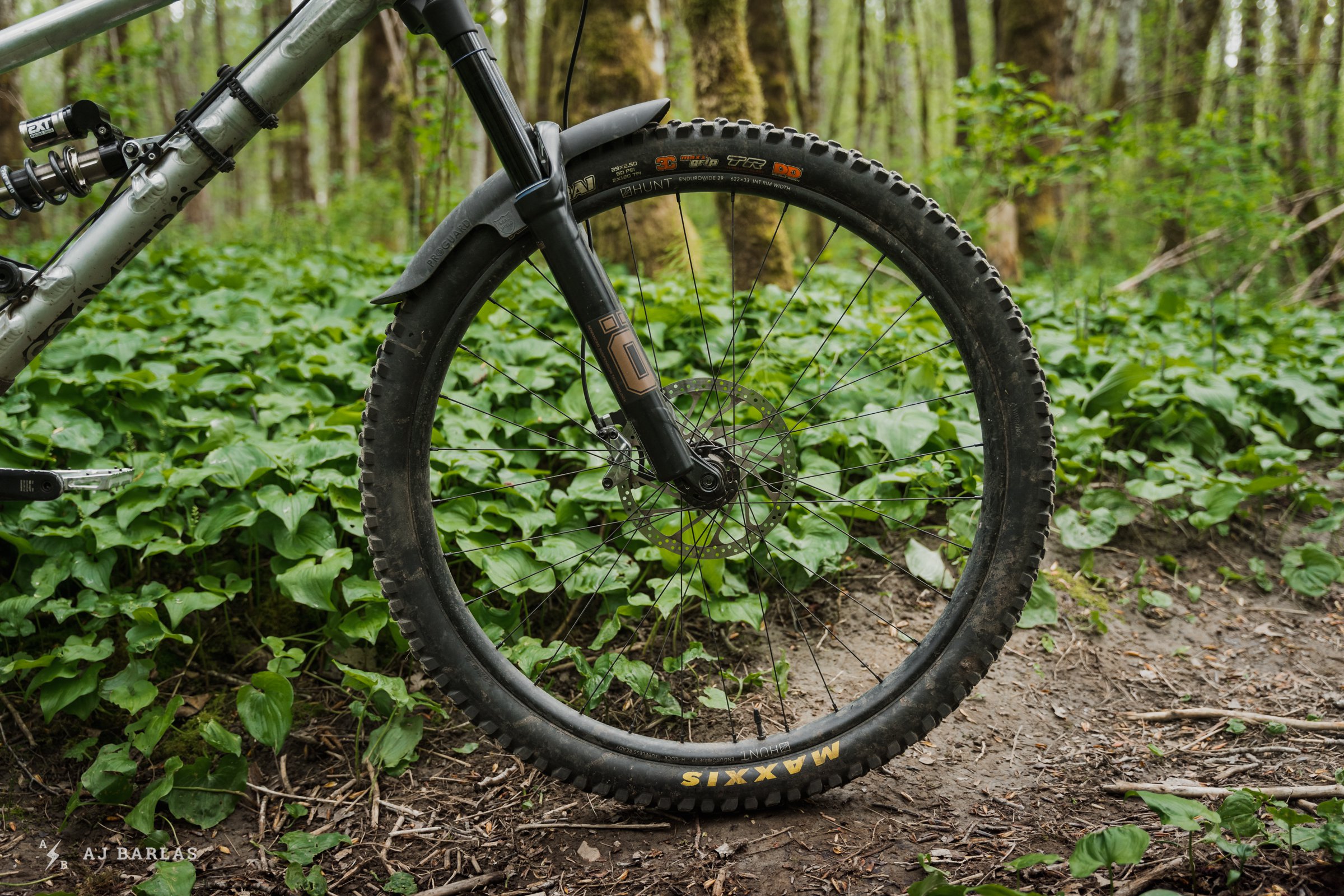
I ran the same Hunt Enduro Wide wheels for most of the test period, to minimize the influence a different wheel might have. Unfortunately I couldn't do the same with tires and ran either a Schwalbe MM, original e*13 TRS or Specialized Eliminator for the smaller rear, and a Minion DHF rear whenever setup 29. The front was always the Assegai DD.
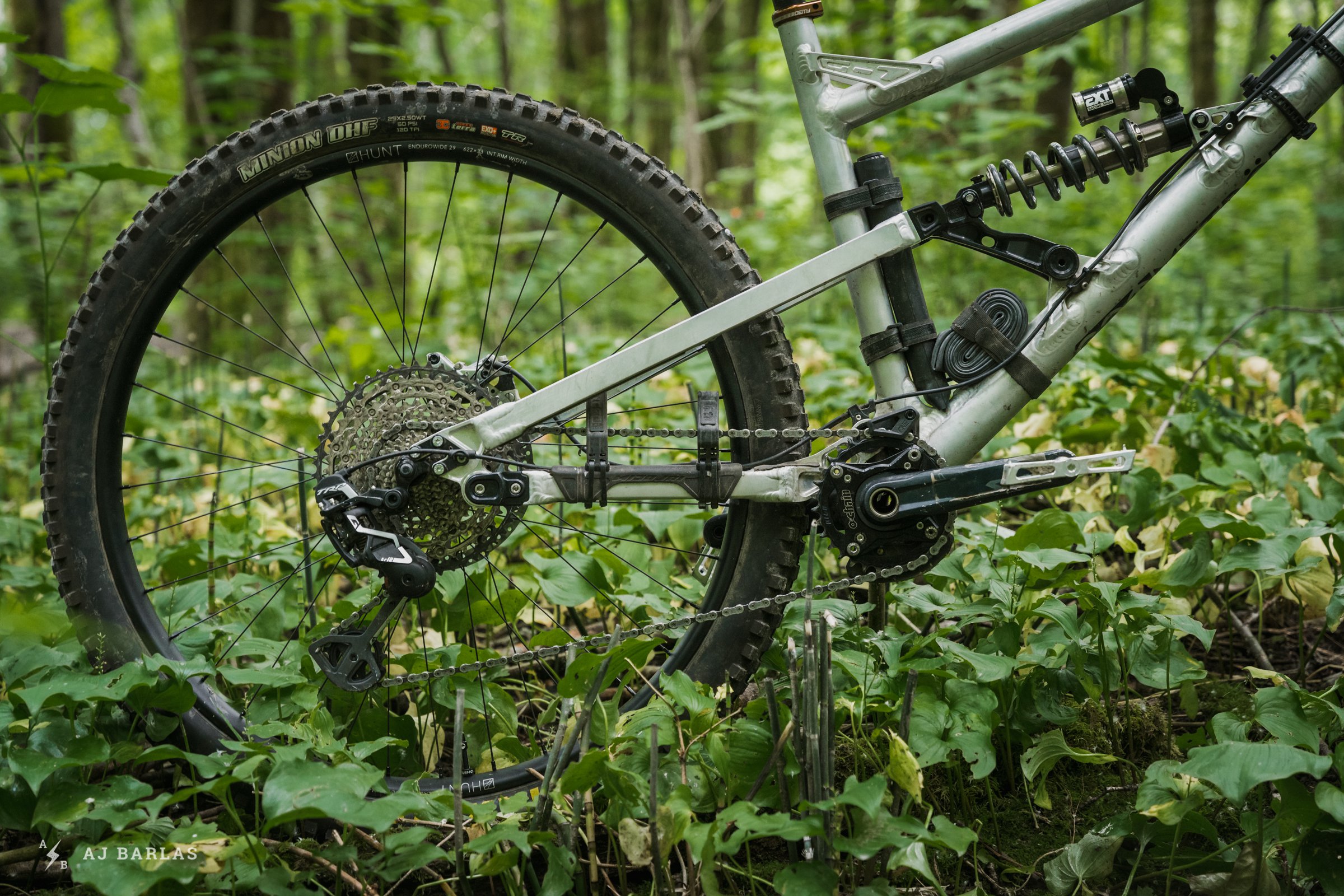
The bigger rear wheel with a shorter rear centre felt good for how I ride but it still wanted a more planned approach and tends to stick to a line for longer. The combination of DHF and a larger wheel made for improved rolling speed.
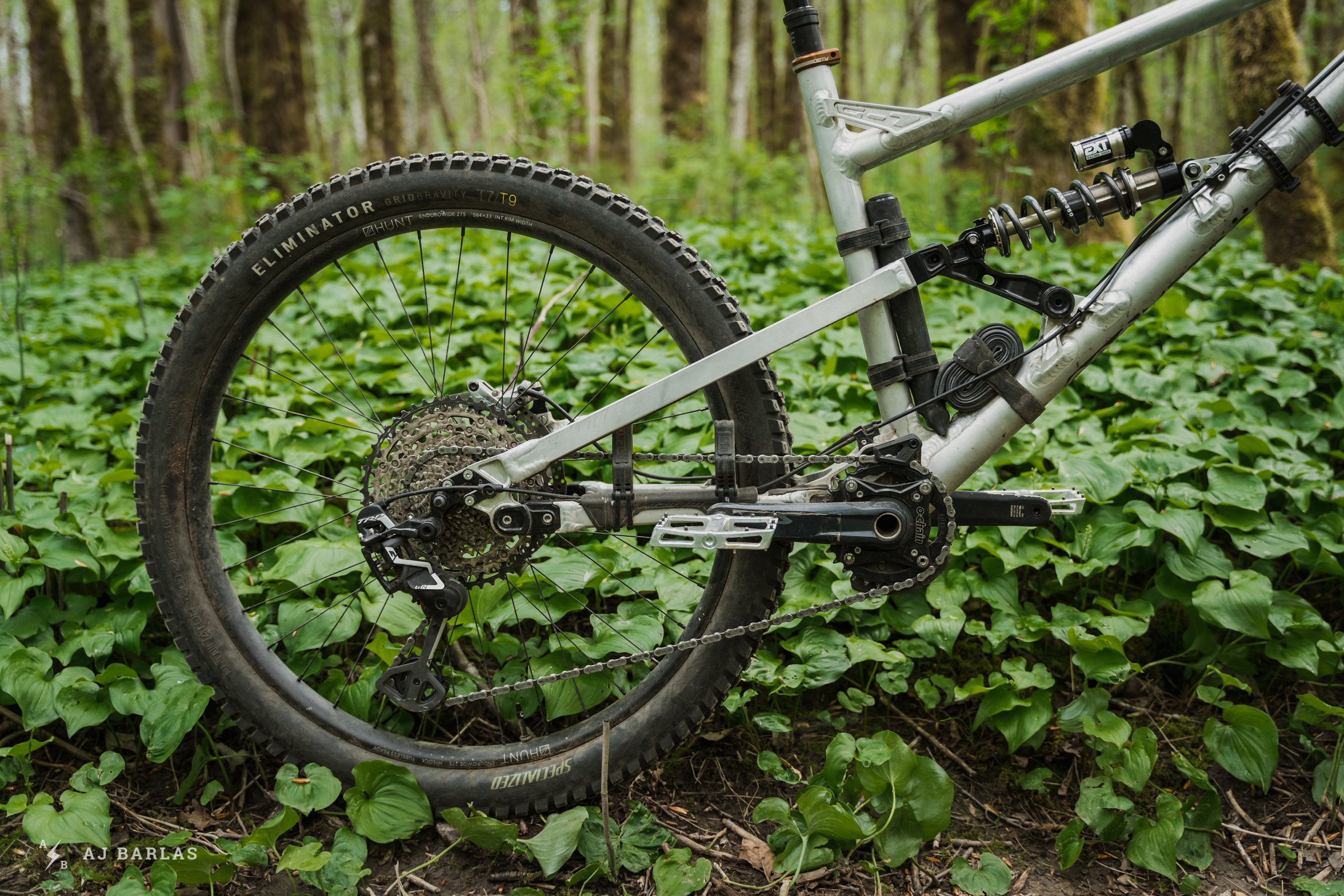
Switching to the smaller rear wheel and a slightly longer rear-centre provided what I was looking for, with great stability and tracking but the ability to move more freely too. Braking with the Eliminator was better than the DHF but the smaller wheel made it hard to notice a clear difference.
The changes to the front centre of the bike worked against what I was seeking with my 29er setup – it grew longer – but despite this, it was clear I wasn't fond of the smaller rear wheel with the shorter rear centre. Across cambers especially, I found the rear wheel struggled for the level of grip I wanted. It felt skittish and I felt the difference between the front and rear centres was too dramatic. Adequately weighting the front wheel became more difficult.
Although the negative was a big one for me, the bike certainly cornered with the character I was after. It could now pivot through an arc rather than take the longer, quieter route and if I mucked up and got the line into a corner wrong, approaching a little tight, I could ‘back it in’ by loading aggressively and changing the arc more quickly. This shifted the ride dynamic of the bike in the direction I wanted and despite the negatives with the short and small rear setup, the potential was clear.
I rode home already plotting the next move. Not thrilled with the short chainstay, I knew the rear-centre needed to be lengthened, bringing back a better balance between the front and rear of the bike but hopefully not adversely affecting the more dynamic cornering traits the smaller wheel had uncovered. I’ve heard riders claim the small rear wheel with a longer chainstay to be the same as a large rear wheel with a shorter stay. In my experience, this isn't an accurate statement.
I pulled the 33mm chainstay mutators off the bike and bolted the stock 41mm option back on, switching the rear centre from 443mm to 450mm. This change lowers the bike, slackening the seat and head angles.* To counter these effects, I lengthened the seat stay 5mm. With the longer chainstay, traction improved but it was still much easier to lift into a manual, hold in a wheelie, and the bike exhibited a greater dynamic in corners or whenever switching direction.
*Chainstays are rarely level to the ground, especially when the bike is loaded. Moving the rear axle further back can lower the bike while slackening the HTA and STA. Shortening the rear raises it and steepens the angles.
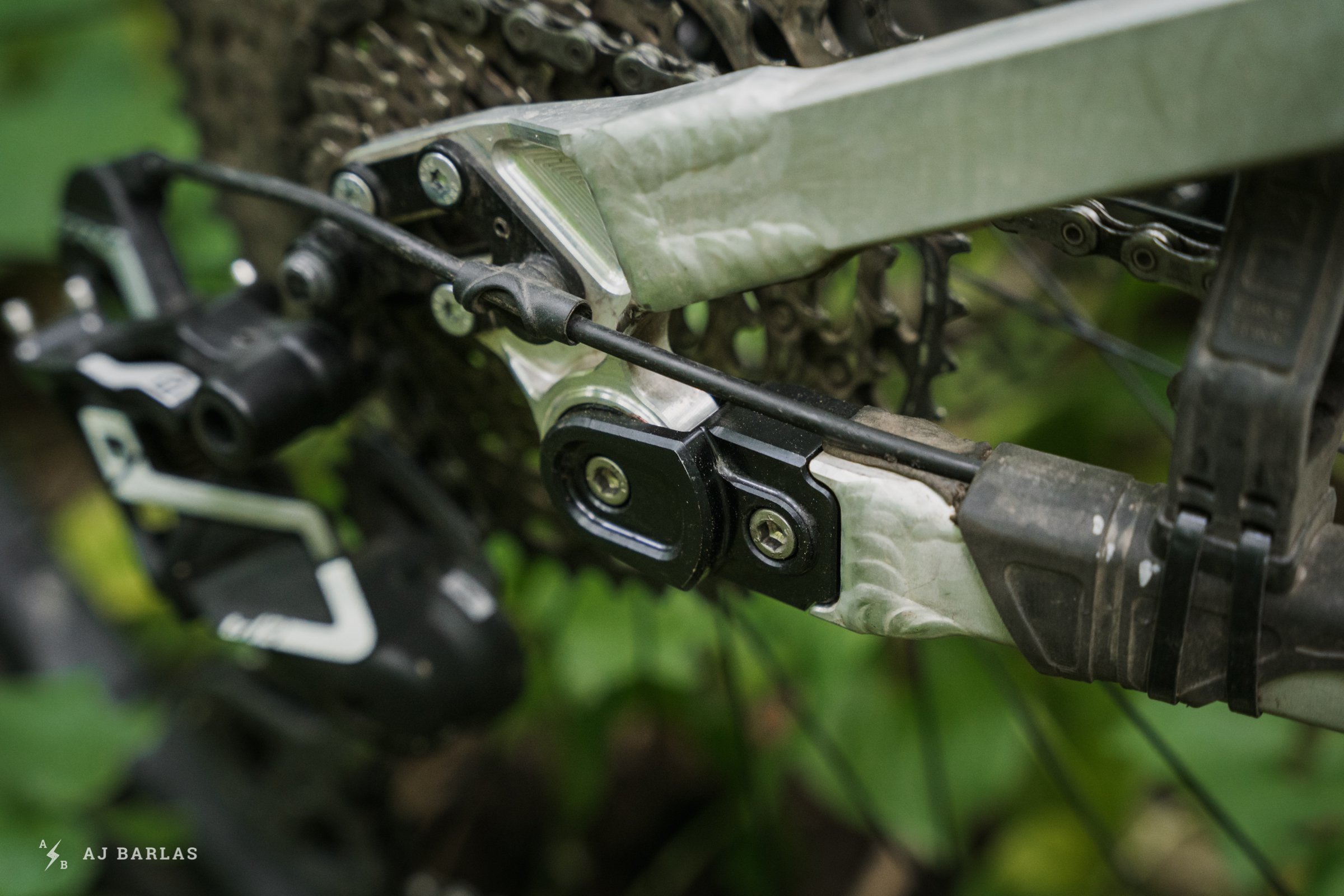
With the 29er I ended up shortening the rear centre, using the smaller 33mm chainstay mutator. This brought it down to 446mm from 453mm.
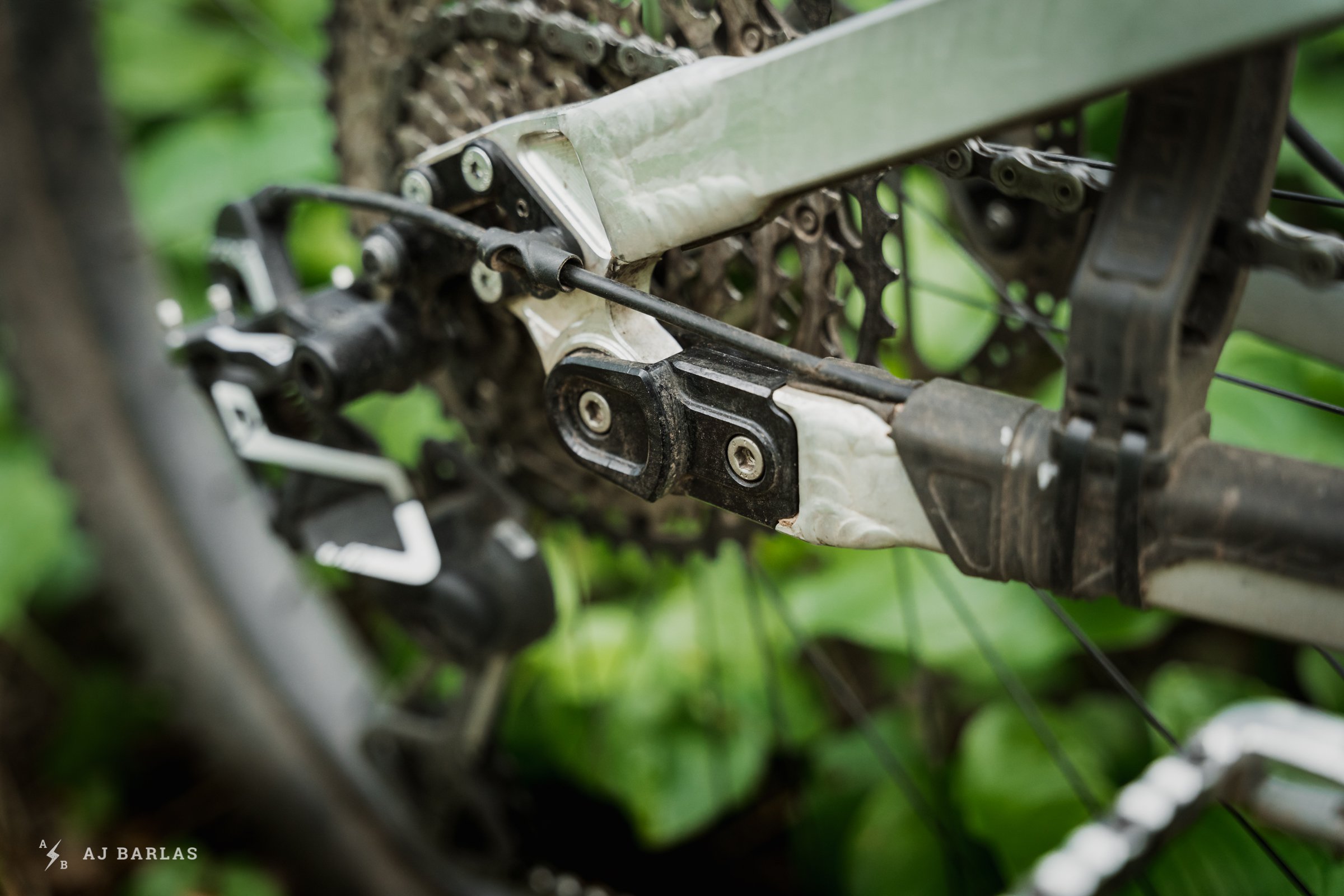
But when the smaller rear wheel is in, I find the bike better behaved with the middle mutator, the longest I've run. This gives a 450mm rear centre compared to the 443mm with the 33mm mutator and small wheel.
Another element I haven’t mentioned was the noticeable effect of the smaller rear wheel when picking up momentum. It was quicker to spin up to my preferred cadence with the smaller rear, requiring less effort and shorter bursts of energy to get the bike back up to a given pace. It also required less effort to maintain a pace when climbing compared to the full 29er. But I still wanted more from the bike. I was now riding the stock geometry with the longer 450mm rear centre and I wanted to shorten the front centre.
After getting the all-clear from GeoMetron to stack the seat stay mutators, I slung the smallest 3.5mm option in with the 15mm for a total of 18.5mm. This change brought the static numbers back closer to where I preferred, shortening the front centre a touch. It raised the BB height, and the feel of the rear suspension also changed. With the longer seat stay, the suspension felt lighter off the top, dynamically sitting a touch deeper and it was more progressive through the stroke.
I was beginning to really enjoy the more light-hearted approach of the mix-wheel setup. The small rear wheel provides cornering characteristics I enjoy while the larger front keeps the grip and stability high while also smoothing out trail feedback better. The rear has hung up more than with the 29er setup and short chainstay, but it’s something I've mostly been able to resolve with rear shock adjustments. It rides less ’seriously’ with the smaller rear wheel, opening things up for more party-time in the woods.
Still not content with the setup, I kept puzzling. I wanted to see if the bike could ride more consistently and smooth the progressive energy increase in the rear suspension. The bike came with two springs for my weight – 325lb and 350lb options – and I’d been riding it with the 325lb option. With the heavier spring installed and the mutators left the same, the bike rode tall and the front became nervous in rough or steep terrain.
Although I didn't find the 15mm seat stay mutator ideal with the lighter 325lb spring, I decided to give it a crack with the stiffer spring. Increasing the spring rate raised the dynamic height of the bike and looking back at my notes from that first ride, I was immediately stoked with the change. Aside from some back and forth testing to finalize this article, I spent most of the time with mixed-wheels in this setting.
The bike feels unreal. – The opening to my notes after the first ride with the stiffer sprung, mixed-wheel bike
With a longer rear centre and stiffer spring, I achieved the balance I sought from the bike and the increased dynamic ride height kept the front centre in check. Despite the static numbers being slacker with this hybrid setup, the bike handles well, with a similar balance across the wheelbase to my preferred full 29er setup. It’s fun to ride, and while the large wheels have their benefits, I found them a bit too serious once on a bike that fits comfortably.
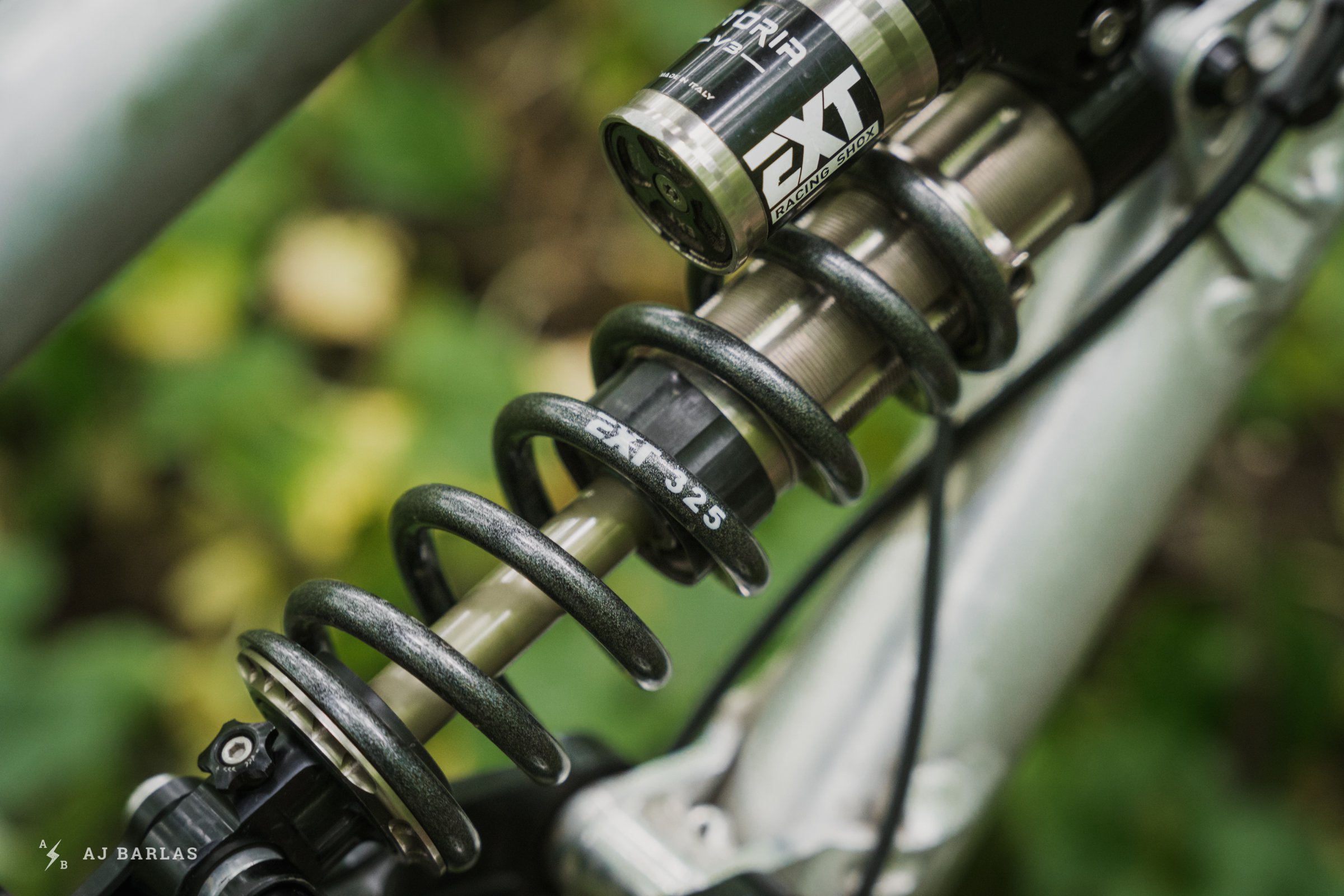
On the full 29er setup I settled for the stock 325lb spring supplied for my weight. I enjoy the ride and shape that I opt for with the G1 setup. It's stable, tracks remarkably, I'm able to control the weight between each wheel with minimal fuss and the suspension is consistent throughout the stroke.
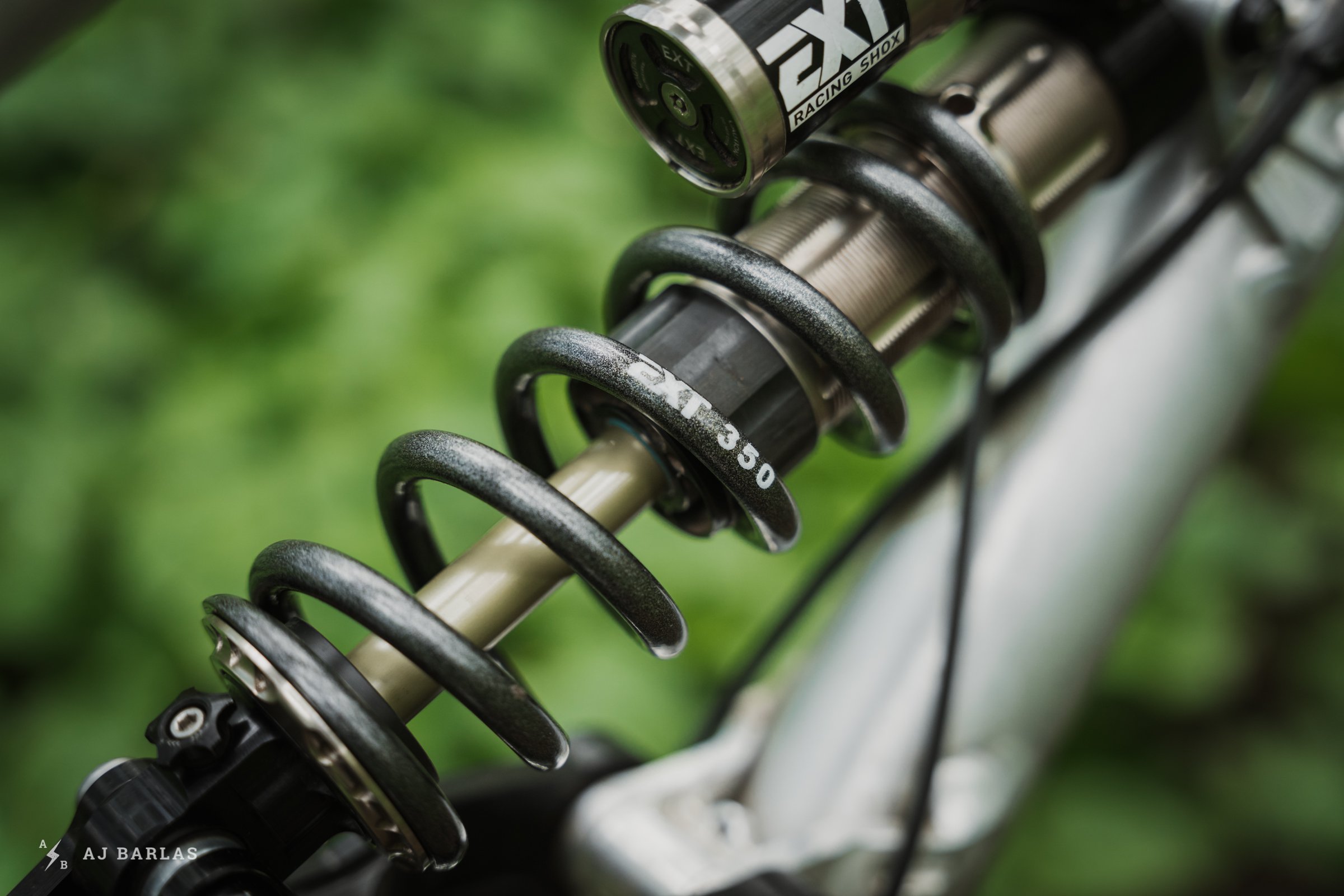
But when switching to mixed-wheels the shape was never quite where I wanted it until I moved to the stiffer spring. The static shape was slacker and lower but the increased support from the spring provided a dynamic shape that works great for me. The suspension setting changes with each setup but with the weather also a factor, much changed throughout.
Summary of Findings
A large takeaway after almost an entire year experimenting has shown me that simply slapping a smaller wheel in the rear or a larger wheel to the front is not necessarily going to provide the best ride. Even considering axle to crown height or flip chips to raise bikes and keep the geometry close to stock doesn't seem to be enough. Will it be able to pivot through turns and change direction more quickly? Yes, but in many cases, I believe there's more to consider.
In my experience, the front centre can feel too big when a small rear wheel is put in a stock 29er without extending the rear centre to compensate. The dynamic, lighter riding characteristics of the small rear wheel transfer well to the longer rear-centre, but there's also improved balance across the bike. Not extending the rear when mixing wheel sizes hindered performance for me and it was harder to sufficiently weigh the front end.
A bonus finding from the experimentation was how large an effect the front centre has on a bike. I never once had a problem with the head angle on my roughly 15mm shorter G16 and even ran it down as low as 62 degrees without fuss. But with the XL G1, the growth to the front of my bike and the 62.5-degree head angle became too much. Lengthening the rear-centre helped correct this, lifting my feet and effectively pushing my weight forward. But the longer of the two rear centres I ran on the 29er didn’t achieve the ride I wanted.
I could go on for days about my experiments with bike shape but to summarize, I strongly feel the front centre measurement is often overlooked and focusing on head angle alone doesn’t tell enough of the story. Some manufacturers are sharing their front and rear centre measurements, which is fantastic, but the majority are sticking with the typical reach, top tube, stack and head angle numbers for the front of the bike. This ignores the reality to what I'm learning is a vital element and one that has a large effect on the ride dynamics of a bike.
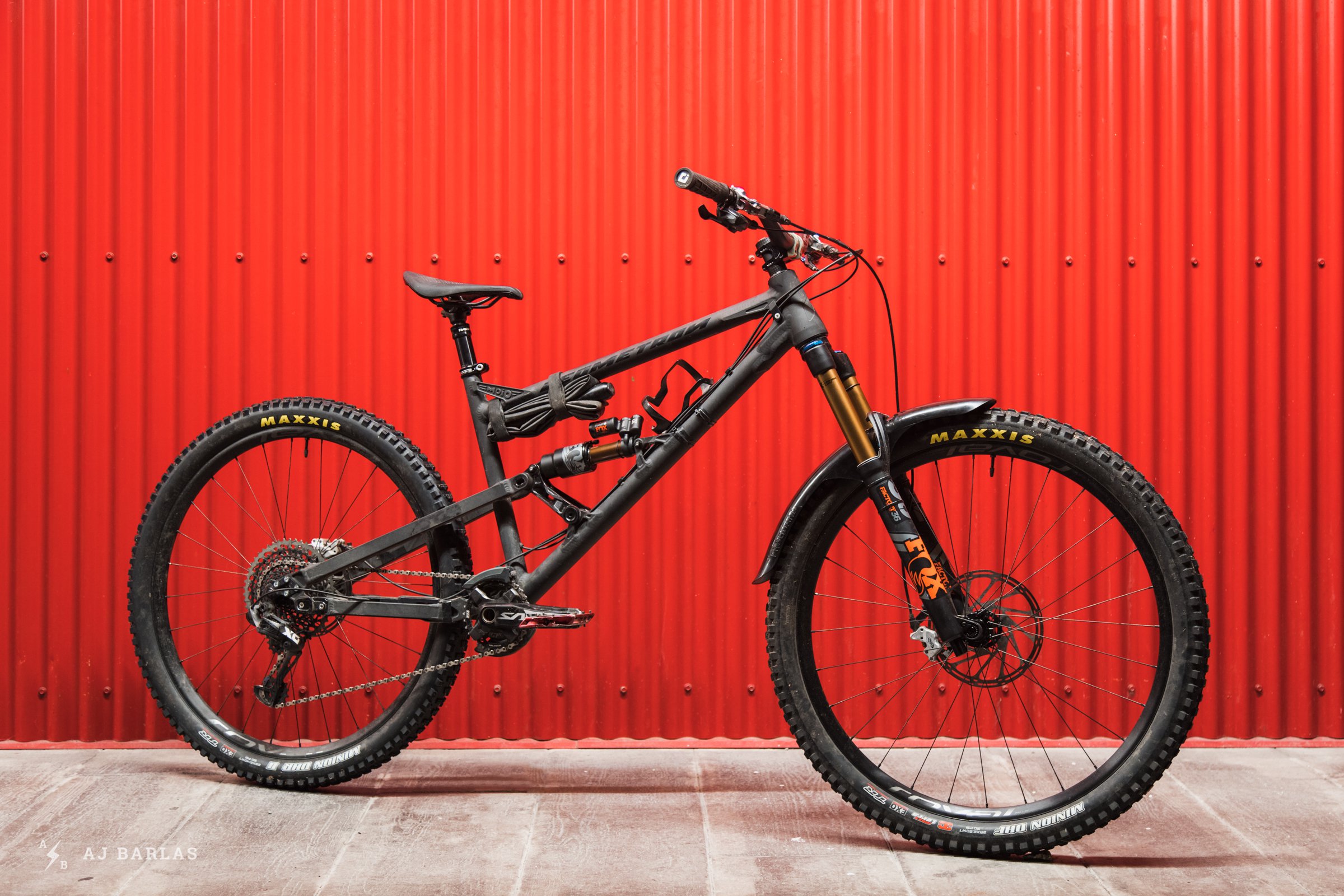
Where the G16 felt a bit short in reach, I never had any problems with the length of the wheelbase, especially the front centre and even ran it down as low as 62 degrees without a problem.
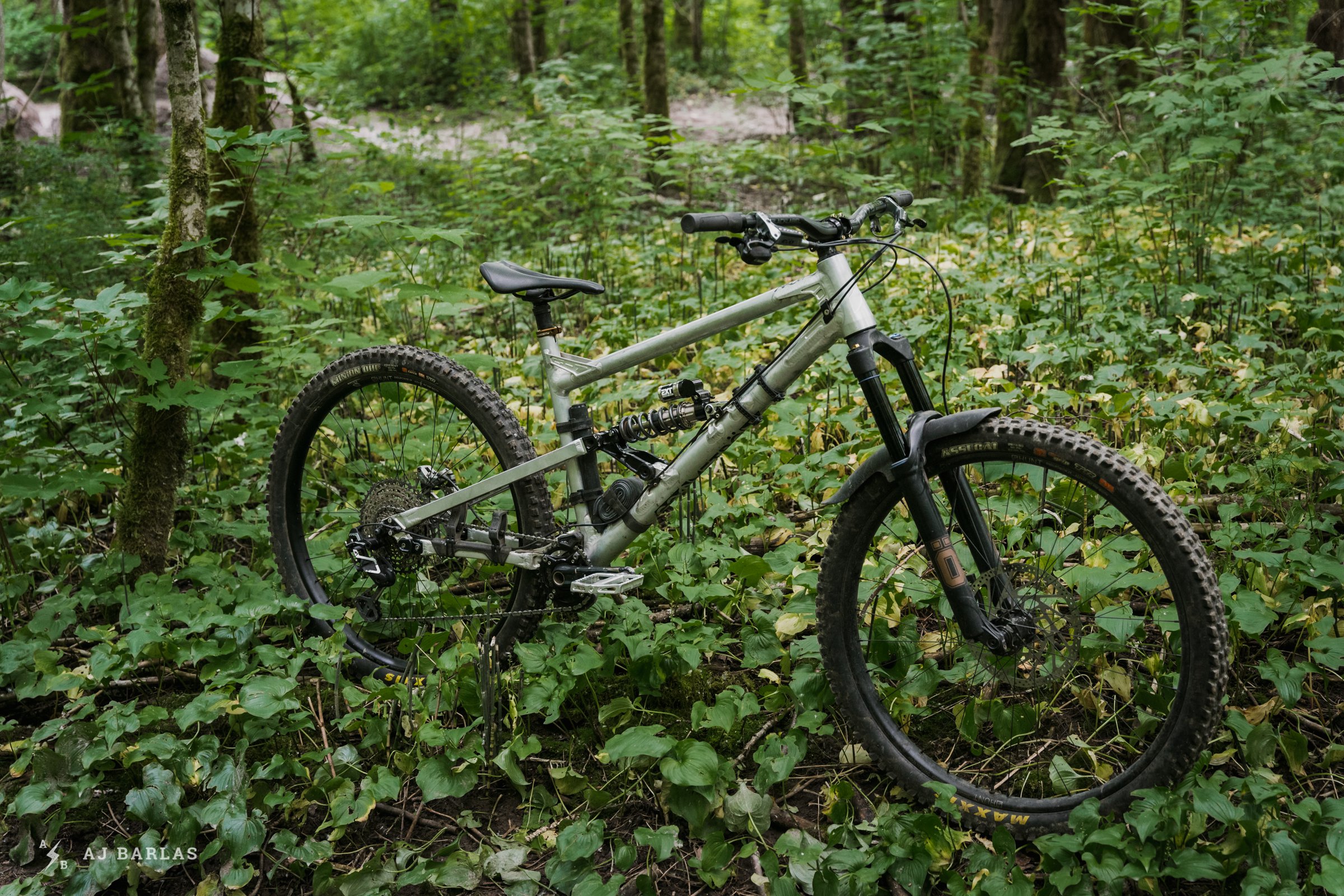
But the longer front centre of the G1 meant I needed to adjust its shape to get a relaxed riding position. With the same HTA as the G16, the longer reach required a concerted effort to weight the front tire.
But that’s a bonus from the past year experimenting. The mixed-wheel bike setup can provide riders with the best of both worlds; fun and control. The front wheel is more planted and calmer on the trail, while the smaller rear wheel allows the bike to be more dynamic. It pivots more tightly through corners and I generally find it to be more fun. Mixed-wheels are about more than clearance, they’re about having a choice over ride characteristics, because not everyone wants the more muted ride of a full 29er.
I once enjoyed a Top Gear video where they put an Audi R8 against a Porsche 911 Carrera and something Richard Hammond said caught my attention; “It’s not just about the result, it’s about the sensation along the way." The R8 handles corners sensationally, its tires gripping the surface like a dog gripping its favourite bone, but the 911 isn’t quite as calm, involving the driver more because it requires more focus and input to handle.
This can also be transferred to the difference between wheel sizes. But with a mix of 29 front and 27.5 rear, riders are no longer stuck at one end or the other and can blend elements of the two. It's time we dismiss mixed-wheels as primarily a tool for improved clearance because there’s far more to it than that. They're great fun on the trail and although at times I miss elements of riding full 29 and full 27.5, I'm generally happier with the qualities of this wheel-size hybrid.
Age: 39
Height: 191cm/6’3"
Weight: 73kg/160lbs
Ape Index: 1.037
Inseam: 32”
Trail on Repeat: Changes as often as my mood.
Current Regular: Every test product spends time on Entrail

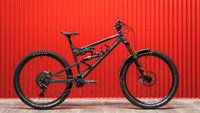
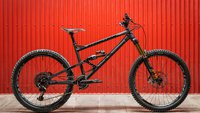
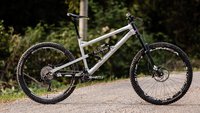







Comments
lkubica
2 years, 9 months ago
I love the depth of your tech articles. I think that most of us really ride bikes which are heavily under-tuned. Of course there are riders who do not care much and ride brilliantly. I respect and envy them, but most of us can see a dramatic improvement in speed and comfort by just sacrificing a few weeks for tuning.
BTW, have you considered Sprindex? It's simply brilliant, you can definitely feel even 10lb difference in spring force.
Reply
AJ Barlas
2 years, 9 months ago
Thanks, Ikubica. I haven’t tried the Sprindex yet but recent conversations with a friend have me quite interested. Psyched to hear you’re enjoying it. What bike are you running it on?
Reply
lkubica
2 years, 9 months ago
Running it on Meta AM 29 and managed to cut a bit of the plastic lever on the first day (you need to rotate it to make sure it will not collide with frame on compression). Anyway, I am running it on RS SuperDeluxe which begs for tuning (or replacement, still undecided). Sprindex is not perfect, after few weeks of using it I can find a white powder where the spring contact with the fiberglass spacer and it requires a lot of effort to turn it. But after a year of riding it still works the same (i.e. very well).
Reply
Kenny
2 years, 9 months ago
Great article AJ. The fact that this site can still shift into turbo-bike-nerd mode is what sets it apart, imo.
I don't have as many adjustment options as you, but I'm about to embark on a similar journey with my Ibis HD5. After mullet my hardtail a while back I've been wanting to experiment Ona full suspension bike.
Basically it's a 170/153mm travel 27.5 bike with a 200x57 shock.
I've adjusted my "spare" 29er fork down to 150mm and it's actually shorter axle to crown than the current 170mm fox 38, so net result will be about 10mm.
I anticipate the front center will feel too long though as it already feels long.
So, I also have a spare 210x55 shock with travel reducers for 52.5 and 50mm stroke, and offset bushing to try to get the eye to eye shorter.
I'm not sure if the offset bushing will counteract the extra shock length enough to get a reasonable BB height, but I actual see this potentially resulting in a bike around 140front/130 rear travel, mullet, and a head tube angle of around 64 degrees. (maybe also need an angle set either to steeper or slacken things). Which sounds fun to me!
Yay for puzzling!
Reply
AJ Barlas
2 years, 9 months ago
It sounds like your well prepared to get deep into the puzzling, Kenny. Interested to hear how you’ve gone with rear shock setup? You may be able to control that front centre by approaching the dynamic shape of the bike with a heavier spring on the rear shock, or some damper adjustments. it can be a challenge getting it to work without taking away from the performance required from the rear suspension, but it’s always worth a shot. But yeah, maybe you’ve already been down that road and it didn’t work out?
Reply
Andy Eunson
2 years, 9 months ago
Really enjoyed this. I’m gonna have to read it again and again to fully comprehend it.
Reply
Perry Schebel
2 years, 9 months ago
i just love the freedom to faff around these bikes enable. if they'd move to a vertical shock configuration to enable a proper water bottle placement (like the saturn 14) i'd be all over these things.
Reply
AJ Barlas
2 years, 9 months ago
A vertical shock would be slick. Maybe some day I’ll ask them why they feel the current configuration performs better, and what they see as limitations to the vertical option on this bike.
Reply
Hollytron
2 years, 9 months ago
I am riding a hardtail with 63% front center and 37% rear center. It has 2 29" wheels 64* ht angle 55mm bottom bracket drop and super tall bars. Its the best cornering and all around handling bike ive yet ridden and all of it came together mostly on a lark with what I could find this last winter. I am interested in comparing the % of front and rear centers to see if that is the key to its cornering ability. Off topic? Sort of, but I think this % may be an important piece of this fun bike nerd puzzle we all love so much. Im 5'8" and love the big wheels.
Reply
AJ Barlas
2 years, 9 months ago
Sounds awesome, Hollytron. There’s certainly something to the front to rear centre and the ratio between them, but I also see it as being more complicated than one range for all bikes.
Different suspension setups, bike shapes, rider sizes and styles are all going to impact what ratio works for certain riders. I plan to measure mine and keep a log of it for future reference but haven’t done so yet. I’d definitely like to understand more about it and what works for me with my bike, then I could consider it when riding others.
Reply
Velocipedestrian
2 years, 9 months ago
Are you using reach for FC, or BB to front hub?
Reply
Hollytron
2 years, 9 months ago
BB to front hub
Reply
roil
2 years, 9 months ago
Great article as usual! Your writing on bike geo inspired my latest bike purchase. I just received a Privateer 161 which I went up a size on. Compared to my old bike, the reach has increased 60+ mm with a much steeper seat tube angle. Tomorrow is my first trail ride but just cruising around the block has been an eye-opener. Body position feels so much better seated or standing.
I also bought a 2.0 degree angleset to mess with the geo. My friends threw a fit when I told them what I intend to do. The 161 might not take to altering the geo as well as the G1 with all of its mutators but it should be a fun experiment.
Reply
AJ Barlas
2 years, 9 months ago
Nice one. The 161 is a great looking bike. What a change you’re about to experience! Enjoy it. Share some of your discoveries from the process, it would be fun to hear.
Reply
Kerry Williams
2 years, 9 months ago
Absolutely loved this article. I fully believe bike sizing and geo are far more important than what type of suspension design a frame utilizes. I remember Dirt Magazine did an interview with Fabien Barel back when he was on Kona and it was all about the experiments with sizing and geo he and his mechanic were doing. If I remember right, they were onto the same conclusions as you, AJ. There is so much more to discuss about the ramifications of mixing ALL the geo numbers on a bike. Reach means nothing without talking about seat angle, chainstay length, stack, etc. It’s a stability pyramid (forklift operation terminology) that is also affected by our body shape and each individual’s ability to move around within it. Great article, and thank you.
Reply
AJ Barlas
2 years, 9 months ago
Fabien Barel is one of my favourite people to listen to. He has so much experience, incredible skill and insight and he's really able to break it down. Any time something comes out with Fab, I listen. Sometimes there's only one 30 second snippet that really gets the mind ticking but usually there's more and he's such a good ambassador for the sport too. Maybe I should try and get him in on a podcast?
Reply
Deniz Merdano
2 years, 9 months ago
Well thought out article AJ! One more read after a full dose of coffee..
Geometron is the lego of bicycles, so many ways to set it up!
Reply
AJ Barlas
2 years, 9 months ago
Cheers mate! Always enjoyed lego and that’s a cool way to think of the G1.
Reply
LWK
2 years, 9 months ago
that was impressive and insightful, thank you!
Reply
ackshunW
2 years, 9 months ago
Great article! Like others I will be re-reading.
But whooooaaa I have to step in with old-school bike nerd history facts— Cannondale Beast Of The East sported a 24” rear wheel a decade before the Big Hit.
(And I think they caught on to the idea from smaller experimental builders like Eastern Woods Research... but don’t quote me)
Reply
AJ Barlas
2 years, 9 months ago
No way! I don’t remember that one but won’t argue with ya. Awesome to learn. So 1993-ish? Wild.
Reply
cyclotoine
2 years, 9 months ago
For some reason I though it came out in the last 1980s but for sure as early as ‘91
Reply
Flatted-again
2 years, 9 months ago
1984! Dang!! https://www.restoration.bike/cannondale/cannondale-mountain-bikes/vintage-cannondale-mountain-bikes/
Reply
Skeen
2 years, 9 months ago
I remember lure of the beast of the east having a high BB to clear logs and other obstacles but never heard about the mixed wheel feature. That was back before the internet went mainstream so it was really hard to find details about these things. great article by the way! The only danger is it making me want a G1 even more.
Reply
Bushpilot
2 years, 9 months ago
Excellent article! I just got my G1 last week and have 5 rides on it now in stock 29er configuration. Can’t wait to start messing with the mutators and a 27.5 rear wheel. I’m sure I’ll be referring back to this article over and over in the coming months.
Reply
AJ Barlas
2 years, 9 months ago
Thanks, Bushpilot. How ya enjoying the G1 so far and are you getting on well with the initial setup?
Reply
Reed Holden
2 years, 9 months ago
How much do you think the process is simplified by converting a 27.5? I've done it with two bikes that are designed around 170/150 suspension and just dropped the fork down to 150. The geo stays pretty close as does the bb height. Your article got me thinking about whether I noticed any of the finer points you mention but I don't think they apply to converting a 27.5 frame - or do they.....?
In any case, I'm glad you are enjoying your mixed wheels. I'm 6'2 and don't need any extra clearance and definitely enjoy the smaller wheels too. The new bronson is definitely tempting to me. Seems like a perfect ride to me.
Reply
AJ Barlas
2 years, 9 months ago
Hi Reed. Psyched to hear you’re enjoying the switch. I can’t be too specific on bumping up the front end as I didn’t ride it that way (though I plan to go full 27.5 again and see) but if geo, including the length of the front centre, remains close to your stock setup, I imagine it could feel quite good. That’s not to say that moving to a longer rear centre wouldn’t be even better, though, especially when many large bikes—you mention you’re 6’2”—still don’t have an adequate rear centre to begin with. That’s changing though.
What did you convert?
Reply
Reed Holden
2 years, 9 months ago
I've converted my large evil insurgent as well as an XL carbon warden. Both worked well. The evil better. Given that the evil is a smaller size with a smaller wheelbase, the bigger front wheel makes the bike a bit more confident (due to the increased roll over). It's a super playful bike and although the bigger front wheel detracts a bit from that, the increased confidence is a worthwhile tradeoff. As for the Warden, it's still not nearly as long as what you ride but it is long in my bike collection and I enjoy it better with small wheels as it keeps the whole thing snappy. I've ditched all but one of my 29ers. For me, it's not about how fast you go but how fast you feel you are going and the fun you have along the way. Hardtails are great for this reason as you are so active riding them and feel like everything is coming at you fast while in reality you are going slower than on the big squish. I feel similarly about the small wheels. It may not be as effortless or fast but there are so many different options that open up with a smaller wheelbase and smaller wheel.
I'm really stoked on the mullet specific bikes being released but given that I really enjoy all my current bikes, I don't really feel like investing in an expensive new platform without demoing it first, which is not possible during covid. Maybe in a couple of years when my bikes are getting clapped out, the supply chain will be better and demos will once again be a reality....
I'd definitely be interested to know how a bike as long as yours behaves with dual 27.5 wheels. When a bike gets that long, can it feel playful? It's great to get articles like this from people who are engaged with experimenting with what they have rather than an endless quest for the "newest and greatest" all the time.
Reply
Velocipedestrian
2 years, 9 months ago
Thanks for nerding out AJ. I'm building a mullet (slowly, supply and cash) at the moment, but since it's a hardtail this is pretty moot for me.
The clearance that did matter in my case was the stays around the tyre, a 29 touring wheel fits fine, but for proper rubber I had to go smaller.
Reply
Skeen
2 years, 9 months ago
I converted my 27.5 GG Megatrail to mixed for a number of reasons and it has been great. After adding a Honzo ESD to my quiver i wanted the HTA on the GG to be a bit slacker than 65.5. Also the Z1 on the ESD made the Ribbon on the GG feel noodly so i wanted to size up stanchions to a stiffer fork. I also found the BB to be a bit low for my liking in slack mode. So now in low mode the BB is 7mm higher than it used to be in tall mode. HTA is 64. Reach stayed about the same as i had room to move spacers to lower the stem. Everything about this geo change is great, although when riding hard berms on flow trails i need to keep the shock open, when locked i feel a bit too high above the bike. The mixed wheel effect is real. I can make much tighter turns and had to relearn the feel to some degree in order to not oversteer some turns i could barely make (at speed) before. It has been a great experiment. I may go back to 27.5 front wheel with the 29 fork just to play around with things but anticipate i will always have at least 1 mixed wheel bike in rotation from now on.
Reply
AJ Barlas
2 years, 9 months ago
Skeen, that sounds like a super fun experiment and it worked out for you too! The ESD is a sick-looking hardtail, Cam is such a fan of it that he bought the review one he had, adding it as another test platform. There will be some interesting stuff coming from that in the future.
It's a shame the pandemic has snuffed demos, because without them it takes a rider stumbling onto something, as you did with the ESD, to discover what different bike shapes and parts can do.
Reply
Skeen
2 years, 9 months ago
Agreed about demos. I was on a 2011 Reign X from ‘12-‘18 when i bought the Guerrilla Gravity. It was the first modern geo bike I rode and I liked it right away. The improved kinematics made it really easy to like and the rest i got used to easily enough. From there i added a shorter stroke air shock to the mix so between the two shocks i have 4 travel options plus coil or air.
For the ESD, the sliding dropouts have allowed me to learn how different chainstay lengths impact handling.
I still haven’t decided on my optimal geo although it will obviously be different for each bike and its primary use. Thanks for the great article to keep me thinking about all of this!
Reply
Tjaard Breeuwer
2 years, 9 months ago
AJ can you elaborate a bit more on the different cornering with the smaller rear wheel? I would have thought that it’s the front wheel that has a more noticeable effect on cornering, since the rear wheel tends to track a tighter radius anyway?
Reply
Skeen
2 years, 9 months ago
I believe that rather than focusing on either wheel independently the mixed wheel effect is a product of the difference in radius between the two. Things are way more dynamic when riding, but to simplify, if two wheels of different diameters (and radius) are tilted at the same angle, the smaller one will complete the same degree of a turn with a shorter circumference or arc length. This translates to a smaller rear wheel completing turns faster than a larger one. So on a mixed wheel bike, the rear end will complete turns sooner than a comparable bike with a sized up rear wheel. This is my layman’s physics interpretation of what i think is going on. I’d be interested to hear who agrees or has a different take.
Reply
Justin White
2 years, 9 months ago
"There’s also a larger contact patch"
Except it's not bigger, unless you run less pressure. Might be longer, but the area will be the same with the same psi.
Reply
26isntquitedead
2 years, 2 months ago
Does anyone have any info on 26/27.5 mullets? Ive begun the process of playing around with this, excited for tge snow to melt to see how it goes
Reply
Please log in to leave a comment.